Introduction
In 1870, there were 98 medical schools across the United States. Of those, only seven accepted women. The Chicago Medical College (the predecessor of Feinberg School of Medicine) admitted three women in 1869 as an experiment in co-education. Mary H. Thompson, MD, who had entered the college for post-graduate work, was awarded an MD ad eundem in acknowledgement of her expertise. The other women, however, were dismissed from the program the following semester because male students had objected to the women’s presence in their anatomy and clinical labs.
Here was a woman who had mastered her profession until it had become an art, and whose interest in it was not because of her personal ambition, but because she loved it and loved it for what it could be to others.
Rev. Dr. William M. Lawrence on Mary Harris Thompson
After the co-educational failure, Thompson, along with Drs. William H. Byford and William G. Dyas, decided to address the lack of opportunities in Chicago for women to pursue formal education in medicine. In 1870, they founded the Woman’s Hospital Medical College of Chicago, which later became the Northwestern University Woman’s Medical School.
In the school’s 32-year existence, nearly 600 women earned their MDs and went on to lead successful practices, educate the next generation of women physicians, and treat underserved communities.
The title of the exhibit, In Pursuit of a Grand Cause, pays homage to Marie Mergler, MD's recollection of the aspiration of realizing equal opportunities for women in medical education and training:
No woman studying medicine to-day will ever know how much it has cost the individuals who were personally concerned in bringing about these changes; how eagerly they have watched the new developments and mourned over each defeat and rejoiced with each success, for with them it meant much more than success or failure for the individual, it meant the failure or success of a grand cause.
Marie J. Mergler
A Note on Names
The college had several name changes over the years. It began as the Woman’s Hospital Medical College of Chicago. In 1879, the name changed to Woman's Medical College of Chicago when the college ended its formal affiliation with the Woman’s Hospital. In 1892, the college formally affiliated with Northwestern University and changed its name to the Northwestern University Woman's Medical School.
Credits
Curated by Katie Lattal, MA, Special Collections Librarian; Abebi Espinoza, MFA, former Special Collections Library Assistant; Ramune Kubilius, MALS, AHIP Collection Development / Special Projects Librarian; Corinne Miller, MLIS, Clinical Informationist; Lisa O'Keefe, MSLIS, former Sr. Program Manager; and Annie Wescott, MLIS, Research Librarian.
Designed by Katie Lattal and Corinne Miller.
This exhibit was part of Feinberg School of Medicine’s Women in Medicine initiative for the 2019-2020 academic year.
Marie J. Mergler
Surgeon & Mentor
1851-1901 | MD 1879
Marie J. Mergler, MD graduated as valedictorian for the 1879 class of the Woman’s Hospital Medical College (later the Woman’s Medical School). She became a well-known gynecologist and was one of the top-ranked abdominal surgeons in Chicago, male or female. She taught at her alma mater, where she climbed the ranks from assistant to professor to chair of the gynecology department, and finally, to dean. She served on staff at many Chicago hospitals and became the head physician and surgeon at the Mary Thompson Hospital when Thompson passed away.
All told, Mergler spent half of her life connected to the Woman’s Medical School. She was completely dedicated to her patients and students, so much so that she died on her 50th birthday from pernicious anemia, likely brought on by overwork and exhaustion.
Mergler was in the first group of women allowed to compete for the highly-sought internships at Cook County’s medical facilities. Despite earning the highest marks and thus securing an appointment at the Cook County Insane Asylum, Mergler was denied the position as it was deemed unsuitable for a woman.
Mergler remembering the Cook County intern exam:
A crowd of students and spectators received us with deafening shouts and hisses. They clapped, they whistled, they stamped…
The examination was fair in most of the departments. It was oral. The gynecologist and obstetrician tried to get us off the balance by making vulgar jokes. The surgeon tried to wreck us … But one point we did gain. We made our surgeon feel ashamed of his work [for not seriously educating them], and made him turn over a new leaf.
By: Katie Lattal
Sarah Hackett Stevenson
Physician & Activist
1849-1910 | MD 1874
Judging from the amount of gray matter in the brain of woman, we should say it was placed there to be used, and the only limitation to its use is the law under which this organ of thought is constructed.
Sarah Hackett Stevenson
Sarah Hackett Stevenson, MD was the 1874 valedictorian of the Woman’s Hospital Medical College. After study abroad, she became a professor of physiology and histology at the college, and later taught obstetrics, ethics, and history. She had a private practice and was on staff at half a dozen area hospitals. Stevenson was the first female member of the American Medical Association (1876), the first woman on staff at Cook County Hospital (1881), and the first woman appointed to the Illinois State Board of Health (1893). She also co-founded a nursing school, a maternity hospital, and two homes for needy populations. In her spare time she was an active member of 10+ social and professional clubs.
When it became apparent that the Medical Bureau of the 1893 World’s Columbian Exposition would not honor its promise to employ three women doctors at the fair, Stevenson and her peers were determined that the female physician community would be represented. They raised funds for an Illinois Woman’s Hospital and Pharmacy building, staffed entirely by female doctors, nurses, and pharmacists from the state. The building was a living exhibit; the staff treated over 3000 patients in the model wards and operating rooms.
Stevenson was committed to the betterment of women. She worked to provide women with quality medical care, advocated for women's rights and welfare, and championed women's abilities as physicians, fighting for equality of opportunity in medical education.
By: Katie Lattal
Emma Ann Reynolds
Pioneer & Physician
1862-1917 | MD 1896
Emma Ann Reynolds was born in Frankfort, Ohio in 1862, when the 13th Amendment—which declared slavery illegal—had yet to be ratified. Reynolds graduated from Wilberforce University, a historically black university, and moved to Kansas City, Missouri, to teach. There she noticed extreme health disparities between blacks and whites. Determined to meet the health needs of the African American community, Reynolds applied to nursing schools, only to experience rejection repeatedly because she was black. She consulted Daniel H. Williams, MD, a prominent African American surgeon, for support, and this led to the opening of Provident Hospital, the first hospital in Chicago owned and operated by African Americans. Reynolds graduated from Provident Hospital’s nursing school in 1892. Three years later she became the first African American woman to receive her MD from Northwestern University Woman’s Medical School.
Reynolds divided her time between private practice, hospital work, and teaching positions in nursing schools. She followed her brother, Rev. Louis Reynolds, as he moved around the country, working in Waco, TX, New Orleans, LA, and Washington, DC. In 1902 she moved back to Frankfort, Ohio, and remained there until her death in 1917.
By: Abebi Espinoza
Alice Hamilton
Humanitarian & Educator
1869-1970 | MD 1893
I used to despair of relief for the overworked, underpaid immigrant laborers, who took with hopeless submission whatever was given them, who rarely ever dreamed of protesting, much less rebelling.
Alice Hamilton
Alice Hamilton began her career as a professor of pathology at the Northwestern University Woman’s Medical School in 1897. She lived at Hull House and befriended other women known for social reform such as Jane Addams and Florence Kelly. Not far from her residence she noticed poverty and a high rate of disease among the immigrant population. This sparked her interest and study of what is now known as occupational health.
Hamilton was appointed Special Investigator for the United States Bureau of Labor in 1911. Her studies focused on lead and its link to high mortality rates among factory workers. She educated employers and individuals in the medical industry on workplace hazards and industrial diseases among the immigrant working class.
In 1919, Hamilton became Assistant Professor of Industrial Medicine at Harvard Medical School. She was the first woman to be a professor at Harvard University. She authored the books Industrial Poisons in the United States in 1925 and Industrial Toxicology in 1934. After her retirement from Harvard, she continued her work with industrial disease as a consultant in the Division of Labor Standards within the Department of Labor.
By: Abebi Espinoza
Northwestern University announced the closure of the Woman’s Medical School in January 1902 due to the school’s debts. The Board of Trustees promised to allow students to complete the academic year, but abruptly shuttered the school in March.
In the years leading up to this, the deans and faculty repeatedly asked for financial and administrative assistance, but they failed to realize that their contract with Northwestern did not prescribe material support. The Trustees required the Woman’s Medical School to be self-supporting, but also controlled the school’s revenue and expenditures. They even capped enrollment when student fees would have provided much-needed income. For reasons unknown, the faculty did not attempt to fundraise outside of appeals to university leadership.
The work they have done there has been good not only ‘for women’ but for anybody, and in itself. Leaving out the questions of sex altogether, it has had undeniable scientific value.
Anonymous editorial, Chicago Daily Tribune, January 5, 1902
The closure of the Woman’s Medical School had an immediate and negative impact because the school had represented real gains for women’s education and equal rights. It afforded women the freedom to study medicine without stigma or discrimination. It created unprecedented opportunities for women to hold professorships and conduct research, and it provided a toehold in medicine for women of color.
Today we celebrate the school for its progressive mission and the contributions of students and faculty. These inspiring physicians spread across the globe, dedicating themselves to treating groups like women, children, communities of color, immigrants, and the mentally ill, thereby contributing significantly to the health of these communities with committed and compassionate patient care, and to the profession of medicine through research and instruction in underserved specialties.
Distribution of medical specialties among Woman’s Medical School graduates.
Archival Collections
- American National Red Cross photograph collection, Library of Congress, Washington, DC. https://lccn.loc.gov/2017668669
- Board of Trustees Minutes, 1/1/1. Northwestern University Archives.
- George Grantham Bain Collection, Library of Congress, Washington, DC. https://www.loc.gov/item/2014710146/
- National Child Labor Committee collection, Library of Congress, Washington, DC. https://lccn.loc.gov/2018676355
- Records of the National Woman's Party, Manuscript Division, Library of Congress, Washington, DC. http://hdl.loc.gov/loc.mss/mnwp.160064
Published Sources
- Beatty, William K. "Marie J. Mergler: Surgeon and Friend." The Proceedings of the Institute of Medicine of Chicago 36, no. 3 (July/September 1983): 101-104, 136.
- ———. "Sarah Hackett Stevenson—Concerned Practitioner and Social Activist." The Proceedings of the Institute of Medicine of Chicago 35 (1982): 99-101.
- Biographies of Physicians and Surgeons: Illustrated. Chicago: J.H. Beers & Co, 1904. https://archive.org/details/biographiesofphy00chic/mode/2up
- Chicago Medical Society. History of Medicine and Surgery and Physicians and Surgeons of Chicago. Chicago: The Biographical Publishing Corporation, 1922.
- Cutler, H.G. Medical and Dental Colleges of the West: Historical and Biographical: Illustrated in Photogravure and Steel: Chicago. Chicago: The Oxford Publishing Company, 1896. https://hdl.handle.net/2027/uiuo.ark:/13960/t1xd26057
- Dickerson, Dennis C. "Family and Faith: The Medical Witness of Emma Ann Virginia Reynolds, M.D., 1862-1917." African Methodism and its Wesleyan Heritage: Reflections on AME Church History, 90-94. Nashville, Tennessee: AMEC Sunday School Union, 2009.
- "Dr. Emma A Reynolds, Head Nurse at Freedmen's Hospital, Washington, D.C." The Colored American, October 13, 1900. https://www.newspapers.com/article/30975830/dr-emma-a-reynolds-the-colored/
- Fine, Eve. "Pathways to Practice: Women Physicians in Chicago, 1850-1902." PhD diss., University of Wisconsin-Madison, 2007.
- "For Model Hospital Illinois Woman's Board Secures an Entire Building." Chicago Daily Tribune, April 6, 1893.
- Golbez. States and Territories of the United States of America in Central North America - March 30, 1870, to July 15, 1870. Map. July 15, 2014. https://commons.wikimedia.org/wiki/File:United_States_Central_map_1870-03-30_to_1870-07-15.png. Adapted in Adobe Photoshop CC 2019 to reflect sex distribution in US medical schools in 1870.
- Hamilton, Alice. Exploring the Dangerous Trades: the Autobiography of Alice Hamilton, M.D. Boston: Little, Brown, 1943.
- Illinois Woman's Exposition Board. Official Catalogue of the Illinois Woman's Exposition Board. Chicago: W.B. Conkey, 1893. https://hdl.handle.net/2027/uiuc.2829551
- Mergler, Marie. "Northwestern University Woman's Medical School." The Clinical Review 3, no. 1 (October 1893): 56-62.
- The New Chicago Album. New York: Wittemann Bros., 1883. http://collections.carli.illinois.edu/cdm/ref/collection/nby_chicago/id/7427
- “The Northwestern University Woman’s Medical School.” Editorial. The Woman’s Medical Journal 12, no. 3 (March 1902): 56-57.
- Prominent Physicians, Surgeons, and Medical Institutions of Cook County in the Closing Year of the Nineteenth Century: with Biographical Sketches. Chicago: Redheffer Art Publishing Co., [1899]. https://archive.org/details/prominentphysici00unse/mode/2up
- Royster, Jacqueline Jones. "Emma Ann Reynolds, 1862-1917, Ross County." Profiles of Ohio Women, 1803-2003, 95. Athens, Ohio: Ohio University Press, 2003.
- “Rush Medical School Admits Women.” The New York Times, January 26, 1902.
- Schultz, Rima Lunin and Adele Hast. Women Building Chicago 1790-1990: a Biographical Dictionary. Bloomington, IN: Indiana University Press, 2001.
- “Trustees Make a Statement. Official Announcement of Discontinuance of Woman’s Medical School and the Reasons.” The Chicago Daily Tribune, January 7, 1902. ProQuest Historical Newspapers.
- “Woman in Medicine.” Editorial. Chicago Daily Tribune, January 5, 1902. ProQuest Historical Newspapers.
- Woman's Medical School, Northwestern University: (Woman's Medical College of Chicago): the Institution and its Founders, Class Histories, 1870-1896. Chicago: H.G. Cutler, 1896. http://resource.nlm.nih.gov/62810370R
- “Women Rally to School—Want Their Northwestern Classes Continued.” Chicago Daily Tribune, July 13, 1902. ProQuest Historical News.
Exhibit Details
Created in celebration of the 150th anniversary of the founding of the Northwestern University Woman's Medical School, formerly Woman's Hospital Medical College of Chicago, this exhibit presents a brief history of the school and focuses on the lives of four women who were either graduates and faculty members of the school.
-
- Location
- Second Floor Hallway
- Date
- Mar 12, 2020 - Present
- Contact
- ghsl-specialcollections@northwestern.edu
- Doi
- Banner 1: https://doi.org/10.18131/g3-wdp9-3x66. Banner 2: https://doi.org/10.18131/g3-80k0-f120. Banner 3: https://doi.org/10.18131/g3-9pyj-qf87. Banner 4: https://doi.org/10.18131/g3-y8x0-vw91. Banner 5: https://doi.org/10.18131/g3-d43x-4907. Banner 6: https://doi.org/10.18131/g3-wmhe-3p45.
- Links
- View the exhibit banners
- Woman's Medical School Guide
- Exhibit Guide
- Subjects
- women's history
- northwestern
- biography
- 19th century

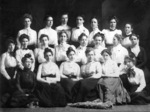
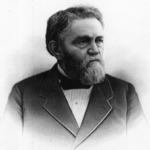
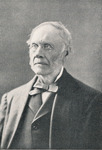

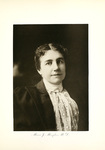
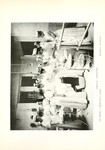


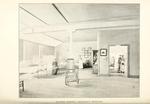
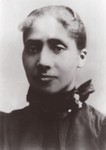
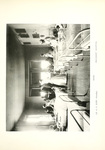
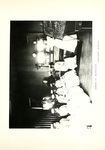
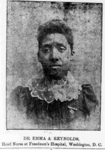
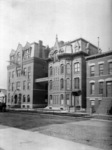
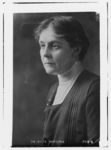
.jpg)
.jpg)
.jpg)
